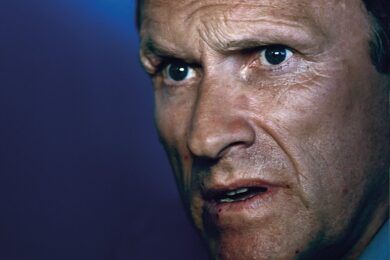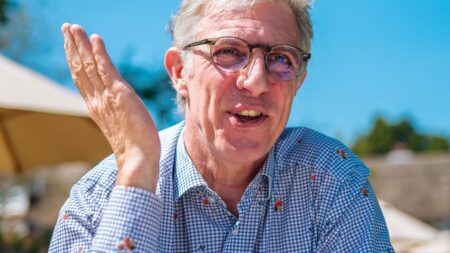Brock phrases it diplomatically, but the sentiment is the same: “We played with a totally straight bat and thought that was the common agreement. We were given some rude awakenings and didn’t have the wherewithal to respond rapidly.”
Grice qualified fourth, with the Brock car seventh. The Australians were not worried — they thought they would be on the pace in the race. And it appeared that way as Grice moved up to lead before his team-mate, Graeme Bailey, dropped the car into a sandtrap. Brock and Moffat lasted just six laps before an axle failure.
Two weeks later the ETC teams were at Donington and there was a different problem: it was freezing. “I’d never seen snow before,” remembers Segal. Grice qualified third with Brock seventh, but in the race the Holdens moved up and for one glorious moment ran 1-2 before rain came along. Bailey then dropped it in a sandtrap again, while Brock and Moffat struggled home in fifth.
The results had not been great, but Moffat was enjoying the relationship with Brock. “We should have done it 10 years ago,” he mused at the time. “Imagine what we would have achieved if we had done that! Peter and I started out with nothing and built things up, and we are quite similar. It has been a pleasure.”

’86 campaign started well with early wins in the Southern Hemisphere
Getty Images
Warm feelings in the team did little to help at Hockenheim a week later, where it was freezing once again. “I remember one morning,” says Segal, “we ran into a German driver at the hotel. He had a sponsor who had a chopper parked outside the hotel and offered us a lift. The pilot brushed the snow off the chopper, fired it up and we did a five-minute flight across the Rhine to the track.” In qualifying Grice was third but Brock was 11th. In the race the charging Grice crashed into a backmarker while fighting for the lead, while Brock and Moffat finished fifth again.
The first leg of the programme was over. “We thought we would be reasonably competitive and that is what we have been,” Moffat concluded. “There is a different set of guidelines in Europe. Now we know what they are we can do something about it!”
In the months that followed before MHDT returned, for the Spa 24 Hours, tensions began to rise inside the team. Brock was close to a Melbourne chiropractor called Eric Dowker, who was known as ‘Dr Feelgood’, and together they had come up with a controversial device which they called the ‘energy polariser’. It was, according to Brock, “a high-technology energy device which creates a polarised or ordered molecular arrangement as distinct from the normal ‘random’ structure. This alters the behaviour and the characteristics of materials and components in the vehicle.”
‘Peter Perfect’ wanted to convince GM to fit this magic box in all of its road cars around the world. “It was the subject of much debate and comment at all levels of GM,” remembers Borrett.

Brock was “fully Polarised” by mid-season
Getty Images
Word spread that Brock was into black magic, but no-one was sure. The one thing that was definitely polarised by the device was the Mobil Holden Dealer Team itself. “There were some people in the company who really believed in it,” says Harvey. “These people started to take increasingly important roles. In other words, if you were a polarised person you were OK. If not you were on the outer. People who did not believe it pretended to go along with it.”
The crisis was coming to a head when the team went back to Europe in July. Things were not helped by the fact that the team was now short of cash: the Australian dollar had dived that summer and Brock says there was “a last-minute decision by Holden to withdraw support for our venture”. He believes that Holden was already negotiating a deal for 1987 with Tom Walkinshaw. It did not help that the team’s 12-hour Spa simulation at Calder had ended after just 90 minutes with a head gasket failure.







